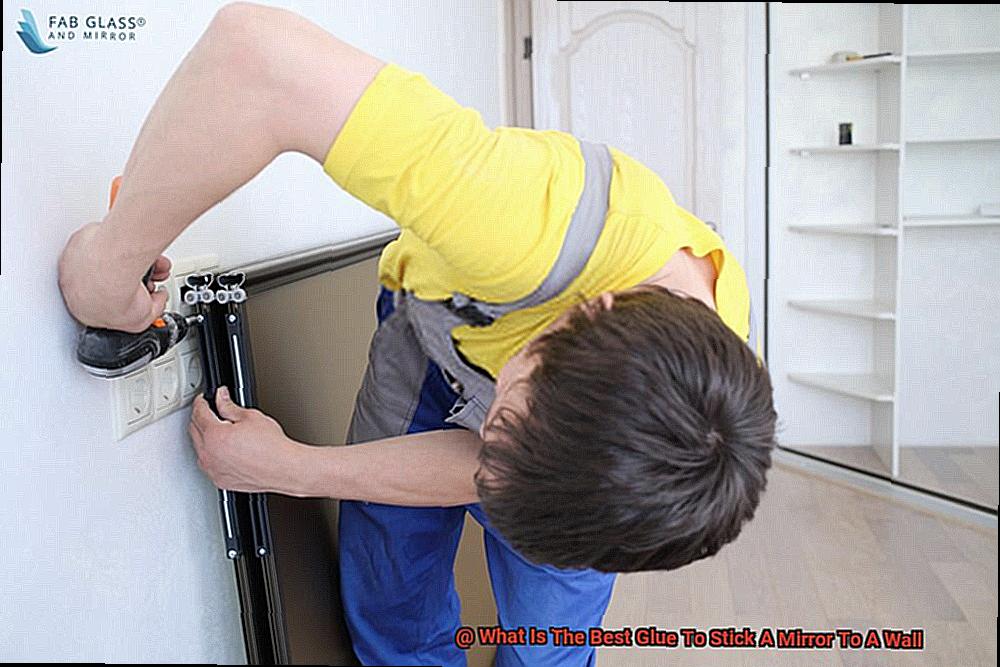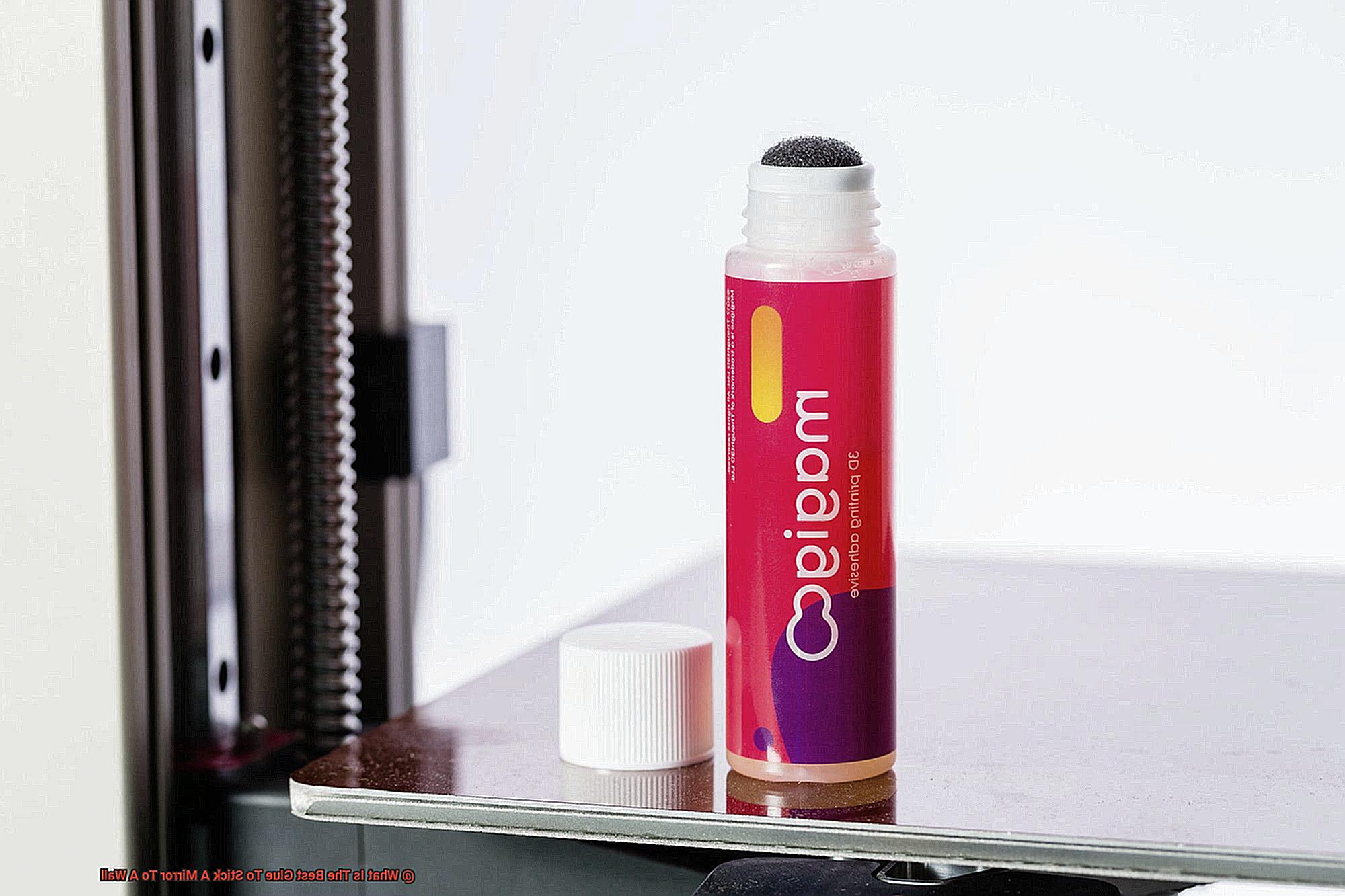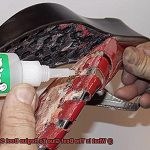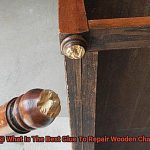Ready to hang that beautiful mirror on your wall? Choosing the right adhesive is key to keeping it securely in place. After all, no one wants a wonky reflection or the sound of shattered glass haunting their home. But with so many adhesive options out there, it’s easy to feel overwhelmed.
Don’t worry, we’ve got you covered. In this guide, we’ll break down the pros and cons of different adhesives so you can make an informed decision.
Whether you’re a DIY enthusiast or a seasoned pro, our goal is to give you expert advice in a friendly and approachable way.
Mirror mastic or adhesive:
Contents
- 0.1 Mirror mastic or adhesive:
- 0.2 Construction adhesive:
- 0.3 Double-sided mounting tape:
- 0.4 Epoxy:
- 0.5 Silicone adhesive:
- 1 Types of Glue for Mirror Installation
- 2 Considerations for Choosing the Best Glue for Mirror Installation
- 3 Construction Adhesive: Benefits and Drawbacks
- 4 Mirror Mastic: Benefits and Drawbacks
- 5 Double-sided Adhesive Tape: Benefits and Drawbacks
- 6 Silicone Adhesive: Benefits and Drawbacks
- 7 Manufacturer Instructions: Reading and Following Carefully
- 8 Conclusion
Mirror mastic is the go-to choice for many when it comes to mounting mirrors. This thick adhesive not only provides a strong bond but also helps level any irregularities on the mirror and wall. Just remember, it takes some time to cure completely, so patience is key.
Construction adhesive:
Looking for something heavy-duty? Construction adhesive has got your back. It’s perfect for those large or heavy mirrors that need extra support. Just be aware that removing the mirror later on might be a bit tricky.
Double-sided mounting tape:
Need a quick fix? Double-sided mounting tape is your best friend. It’s easy to use, mess-free, and great for lightweight mirrors. Keep in mind that it might not hold up well with larger or heavier mirrors though.
Epoxy:
When strength and durability are non-negotiable, epoxy is your hero. This super-strong adhesive can handle moisture, heat, and whatever else life throws at it. But fair warning – once it’s on, removing it isn’t exactly a walk in the park.
Silicone adhesive:
Versatile and flexible, silicone adhesive is perfect for bathroom installations where moisture resistance is crucial. Just be prepared for a bit of a challenge when it comes to applying it evenly without any visible smears.
Ultimately, the best adhesive for your mirror depends on its size, weight, and location. Don’t forget to read and follow the manufacturer’s instructions for any adhesive you choose.
So, are you ready to find your perfect glue? Let’s dive in and make sure that mirror stays exactly where it belongs – on your wall.
Types of Glue for Mirror Installation
If you’re looking to install a mirror and want to ensure it stays securely in place, you’ll need the right glue for the job. In this article, we’ll explore different types of glue used for mirror installation and their unique advantages.
So, let’s dive into the sticky world of mirror adhesives.
Construction Adhesive
Step into the world of construction adhesive, where magic happens and mirrors find their perfect place on walls. If you’re searching for a reliable and durable solution to affix mirrors securely, look no further than construction adhesive. As an expert in this field, I’m here to enlighten you about the advantages of using construction adhesive and guide you in selecting the right one for your mirror project.
Advantages of Construction Adhesive for Mirrors:
- Versatile bonding: Construction adhesive possesses the power to bond various materials such as drywall, wood, concrete, and metal. This versatility ensures a secure attachment of mirrors to different types of walls, granting them a permanent spot in your space.
- Moisture and temperature resistance: With its resistance to moisture and temperature changes, construction adhesive is an ideal choice for areas like bathrooms or spaces with fluctuating temperatures. Rest assured, your mirror will remain steadfastly in place, undeterred by environmental conditions.
- Unyielding bonding strength: Seek construction adhesives with unparalleled bonding capabilities. This guarantees that your mirror stays firmly attached without any sagging or slipping over time, maintaining its position as the focal point on your wall.
Choosing the Right Construction Adhesive:
- Glass-specific formulations: Opt for construction adhesives specially formulated for glass surfaces or mirrors. These adhesives possess unique compositions designed to provide excellent adhesion and long-lasting bonds, ensuring your mirror stays put.
- UV resistance: Consider adhesives with UV resistance properties to safeguard against yellowing or discoloration caused by sunlight exposure. Preserve the beauty of your mirror even when it faces the sun’s rays.
- Curing time: Pay attention to the recommended curing time provided by the manufacturer. Some adhesives require longer curing periods for maximum strength, while others offer quicker bonding. Following the instructions guarantees proper adhesion and stability, giving your mirror a secure foundation.
Mirror Mastic
This ultimate adhesive offers a multitude of advantages that make it the go-to choice for mirror aficionados.
First and foremost, let’s talk about strength. Mirror mastic is the Hercules of adhesives, creating a rock-solid bond between your mirror and the wall. No longer will you have to worry about your beautiful mirror crashing down unexpectedly. Mirror mastic is formulated to withstand the weight of even the heaviest mirrors, allowing you to admire your reflection without fear.
But wait, there’s more. Mirror mastic is also a master of resistance. Moisture and humidity are no match for this adhesive wonder. Say goodbye to bathroom steam or kitchen splashes ruining your mirror adhesive. Mirror mastic stands strong, ensuring your mirror stays firmly in place, even in the most humid environments.
Now let’s talk about ease of use. Mirror mastic is like a smooth operator, making application a breeze. Its thick consistency allows for easy control as you apply it in a zigzag pattern on the back of your mirror. No more messy or uneven application struggles – mirror mastic has got your back (or should I say, your mirror’s back).
And let’s not forget about time. Mirror mastic dries relatively quickly, meaning you won’t have to wait around forever for it to set. This saves you precious time and allows for faster installation. Who doesn’t love efficiency?
Double-sided Adhesive Tape
Double-sided adhesive tape is a versatile and reliable solution for sticking mirrors to walls. With its strong adhesive properties and ease of use, it has become a go-to choice for DIY enthusiasts and professionals alike.
Let’s dive deeper into what makes double-sided adhesive tape the ideal option for mirror mounting. First and foremost, its adhesive properties are top-notch. This tape is designed to provide a strong and reliable bond, capable of withstanding the weight of even the heaviest mirrors. Made from durable materials like acrylic foam or polyester, it ensures long-lasting adherence.
But what sets double-sided adhesive tape apart is its user-friendly nature. Applying it is a breeze. Simply measure and cut the tape to fit your mirror, peel off the backing paper, and firmly press it onto the back of the mirror. Then, remove the other side of the backing paper, position the mirror on the wall, and press it firmly against the surface. In just a few simple steps, you’ll have your mirror securely mounted.
Not only is double-sided adhesive tape easy to use, but it also creates a flawless finish. Unlike traditional glues that may leave behind residue or uneven surfaces, this tape forms a seamless bond between the mirror and wall. Say goodbye to unsightly marks or imperfections.
However, when using double-sided adhesive tape for mirror mounting, there are a few things to keep in mind. Firstly, ensure that both the wall and mirror surfaces are clean and free from dust or grease. This will guarantee optimal bonding. Additionally, not all tapes are created equal. Look for one specifically designed for mounting mirrors and check its weight-bearing capacity to ensure it can handle your mirror’s weight.
Furthermore, consider the type of wall surface you have and any environmental conditions that may affect the tape’s performance. Some tapes may work better on certain surfaces, so consulting the manufacturer’s guidelines or seeking professional advice can be beneficial.
Silicone Adhesive
Silicone adhesive is a remarkable solution for enhancing your bathroom wall with elegance and functionality. This super glue is the secret weapon for securely sticking mirrors to walls. Let’s explore the incredible properties that make silicone adhesive the go-to choice for mirror installation.
First and foremost, silicone adhesive is renowned for its exceptional bonding strength. It forms a powerful and unyielding bond between the mirror and the wall surface, ensuring that your mirror stays securely in place. No more worries about your mirror crashing down and shattering into a million pieces. With silicone adhesive, you can enjoy peace of mind, knowing that your mirror is steadfastly affixed to the wall.
But that’s not all. Silicone adhesive boasts incredible flexibility. It can withstand movement and vibrations without compromising its adhesive properties. Whether you reside in an earthquake-prone area or have a lively household, rest assured that your mirror will remain firmly in position. Say goodbye to crooked reflections and wobbly mirrors.
And here’s the cherry on top: silicone adhesive is resistant to moisture and chemicals. You can confidently install your mirror in steamy bathrooms or near kitchen sinks without fretting about the adhesive deteriorating. Moreover, it can withstand regular cleaning routines without losing its grip. Convenience at its finest.
To properly use silicone adhesive, ensure both the mirror and wall surface are clean and free from dirt or debris. Provide a smooth and pristine canvas for the adhesive to work its magic.
Next, apply a thin layer of silicone adhesive evenly on the back of the mirror. Remember, less is more. Excessive adhesive can lead to uneven bonding or unsightly oozing – something nobody desires. A thin and uniform layer guarantees a robust and consistent bond.
Once applied, carefully press the mirror against the wall surface, ensuring it’s positioned correctly. Apply gentle pressure for a few minutes to allow the adhesive to set and create an unwavering bond. For extra caution, utilize tape or clamps to hold the mirror in place while the adhesive fully cures.
Considerations for Choosing the Best Glue for Mirror Installation
Choosing the right glue for the job is the secret to a successful and long-lasting attachment. But with so many options out there, how do you know which one is the best for your mirror? Don’t worry, I’ve got you covered. Let’s dive into some important considerations to keep in mind when selecting the best glue for mirror installation.
First things first, you need a glue that plays well with mirror surfaces. Mirrors have a delicate coating on the back, so using just any old adhesive can damage it. Look for a glue that is specifically designed for mirror applications to ensure compatibility and protect that beautiful reflective surface.
Strength and durability are also key factors. You don’t want your mirror falling off the wall and shattering into a million pieces, right? Look for adhesives that are formulated for heavy-duty applications and have a high bond strength. This will give you peace of mind knowing that your mirror is securely attached.
Moisture resistance is another important consideration, especially if you’re installing a mirror in a bathroom or other humid area. Moisture can weaken adhesives over time, leading to potential detachment. Look for a glue that offers excellent moisture resistance to ensure your mirror stays put even in steamy conditions.
Now, let’s talk about ease of application. If you’re planning to install the mirror yourself, you’ll want a glue that is easy to work with. Look for glues that come with clear instructions and have user-friendly application methods like squeeze tubes or applicator nozzles. And don’t forget to consider the working time – you’ll want enough time to position the mirror accurately before the glue sets.
Thinking ahead is always a good idea, so consider removability when choosing a glue. If you ever need to remove or reposition the mirror in the future, you’ll want a glue that allows for easy removal without causing damage. Some adhesives can be removed by applying heat or using special solvents, saving you from headaches down the road.
Last but not least, safety should always be a priority. Look for glues that are non-toxic and don’t emit harmful fumes during the installation process. If you have respiratory sensitivities or allergies, consider using low-VOC or odorless glues to minimize any potential health risks.
Construction Adhesive: Benefits and Drawbacks
Ensuring a secure and long-lasting bond between a mirror and a wall requires choosing the right adhesive. Construction adhesive, also known as construction glue, offers numerous advantages in this regard. In this article, we will explore the benefits and drawbacks of using construction adhesive for attaching mirrors to walls, providing you with the information needed to make an informed decision.

Benefits of Construction Adhesive:
- Strong Bonding Capabilities: Unlike traditional glue, construction adhesive is specifically designed to provide a strong and durable bond between surfaces. This is essential when securing heavy mirrors to walls, preventing accidents and ensuring peace of mind.
- Versatility: Construction adhesive can be used on various materials including wood, metal, concrete, and plastic. Regardless of the wall surface type, construction adhesive can securely attach the mirror, making it a versatile choice for any project.
- Resistance to Moisture and Temperature Changes: Bathrooms and kitchens often experience high humidity levels. Construction adhesive offers excellent resistance to moisture and temperature changes, ensuring that the bond remains intact even in challenging environments. This makes it ideal for mirror installations in these areas.
Drawbacks of Construction Adhesive:
- Longer Curing Time: One drawback of construction adhesive is its longer curing time compared to other adhesives. After application, it needs time to fully cure before the bond becomes fully secure. The curing time may vary based on the brand and type of construction adhesive used, so patience is required.
- Permanent Nature: Once a mirror is glued to a wall using construction adhesive, removing it without causing damage can be extremely difficult. Therefore, careful consideration should be given to the placement of the mirror before using construction adhesive. This permanent nature may limit future repositioning or removal options.
Mirror Mastic: Benefits and Drawbacks
Mirror mastic is a remarkable adhesive designed to securely attach mirrors to walls, providing a seamless and professional installation. In this article, we will explore the benefits and drawbacks of using mirror mastic for your mirror projects.
The Benefits:
- Strong Bonding Capabilities: Mirror mastic forms a rock-solid bond, ensuring your mirror stays in place without any wobbling or slipping.
- Seamless and Professional Finish: Mirror mastic creates a clean and flawless finish, eliminating unsightly gaps or marks between the mirror and the wall.
- Durability: Mirror mastic can withstand moisture, heat, and vibrations, making it perfect for areas like bathrooms or near fireplaces. It also ensures that your mirror remains stable and safe on the wall.
The Drawbacks:
- Permanence: Removing a mirror attached with mirror mastic without damage can be challenging. Careful planning is necessary to avoid regrets later on.
- Limited Flexibility: Adjustments after the mirror is in place are difficult, potentially causing damage. Precise measurements and alignment are crucial during installation.
- Strong Odor: Mirror mastic can have a strong odor during and immediately after application, which may be unpleasant for those with sensitivities or allergies. Working in a well-ventilated area and allowing for proper curing time can help minimize the smell.
Double-sided Adhesive Tape: Benefits and Drawbacks
Look no further than double-sided adhesive tape. This versatile invention has revolutionized the way we stick mirrors to walls, offering a hassle-free and reliable solution. But before you dive headfirst into the world of sticky solutions, let’s take a closer look at the benefits and drawbacks of using double-sided adhesive tape for mirror installation.
Benefit #1: Unyielding Bonding Strength
Double-sided adhesive tape is a force to be reckoned with. It boasts unparalleled sticking power, ensuring that your mirror stays securely in place. This is especially advantageous when dealing with larger or heavier mirrors, where a strong adhesive is crucial.
Benefit #2: Effortless Installation
Say goodbye to complicated tools and lengthy installation processes. With double-sided adhesive tape, applying your mirror to the wall is as simple as peel, stick, and admire. No mixing or curing time required, making it a perfect choice for those seeking quick and easy results.
Benefit #3: Damage-Free Removal
Life is full of changes, and so is our taste in home decor. When the time comes to redecorate or move, double-sided adhesive tape ensures a clean break-up. Simply remove the tape gently, and your mirror will be free from any residue or damage. No regrets, no fuss.
Drawback #1: Heat and Humidity Hurdles
While double-sided adhesive tape is a reliable companion, extreme temperatures and high humidity can put its strength to the test. In these challenging conditions, the tape’s bonding power may weaken, potentially leading to an unexpected crash landing for your mirror. If you reside in a particularly hot or humid climate, it might be wise to explore alternative solutions.
Drawback #2: Tackling Textured Surfaces
Smooth surfaces are a double-sided adhesive tape’s best friend. However, when it comes to textured or uneven walls, this sticky buddy may struggle to maintain its grip. In such cases, it’s worth considering alternative options that are better suited for rough terrain.
Drawback #3: The Weighty Dilemma
Before committing to double-sided adhesive tape, consider the weight and size of your mirror. While it can handle smaller and lighter mirrors with ease, larger and heavier ones may require additional support or reinforcement. Avoid any mirror mishaps by ensuring proper installation for your unique mirror specifications.
Silicone Adhesive: Benefits and Drawbacks
Silicone adhesive is a versatile option for attaching mirrors to walls. When exploring the benefits and drawbacks of using silicone adhesive, several key points emerge.
Benefits:
- Strong Bonding Properties: Silicone adhesive forms a durable bond between the mirror and the wall surface, ensuring that the mirror stays securely in place. This is crucial for large and heavy mirrors, which require a reliable adhesive to prevent accidents and damage.
- Flexibility: Unlike some other glues, silicone remains flexible even after curing. This flexibility allows the adhesive to absorb movements or vibrations in the wall, reducing the risk of cracks or detachment over time. Areas with high foot traffic or walls prone to movement benefit from this feature.
- Resistance to Moisture and Temperature Changes: Bathrooms and kitchens often experience high humidity levels and temperature fluctuations. Silicone adhesive is designed to withstand these conditions without deteriorating or losing its adhesive properties. The mirror remains securely attached, regardless of environmental factors.
Drawbacks:
- Application Challenges: Silicone adhesive can be more difficult to work with compared to other glues. It requires careful application and precise measurements to ensure an even and sufficient amount of adhesive is applied.
- Longer Curing Time: Silicone adhesive typically takes longer to cure compared to other adhesives. As a result, one may need to wait longer before the mirror can be fully functional.
- Limited Repositioning Capability: Once silicone adhesive has cured, it forms a strong bond that is difficult to break without causing damage. If mistakes occur during installation or repositioning is desired later on, removing the mirror can be challenging without damaging either the mirror or the wall surface.
- Residue and Visible Film: Improper application and cleaning can lead to residue or a visible film on the mirror or wall surface. This may affect the mirror’s overall appearance and require additional cleaning or refinishing.
Manufacturer Instructions: Reading and Following Carefully
Today, we’re diving into the crucial step of installing a mirror on your wall – reading and following the manufacturer’s instructions. Trust me, this is a step you definitely don’t want to skip if you want a successful mirror installation that stands the test of time.
Let’s start by understanding why these instructions are so essential. One of the most critical aspects is choosing the right glue. Different mirrors require different adhesives, and the manufacturer’s instructions will guide you on which one to use. Whether it’s liquid nails, mirror mastic, or double-sided adhesive tape, each has its own unique properties and application techniques. By carefully following the instructions, you can ensure that you’re using the right glue for your specific mirror.
Now, let’s talk about surface preparation. The instructions provided by the glue manufacturer are equally important here. They’ll walk you through the process of cleaning both the mirror and wall surface from dirt and grease. Nobody wants their mirror tumbling down due to a poorly prepared surface, right? So take the time to clean and dry everything thoroughly before applying the adhesive.
Once you’ve prepped your surfaces, it’s time to apply the glue. The manufacturer’s instructions will give you guidance on how to do this properly. Whether it’s spreading an even layer of adhesive on the back of the mirror or directly onto the wall surface, it’s absolutely crucial to follow these guidelines. This ensures proper coverage and avoids any gaps or air bubbles that could compromise the bond between your mirror and the wall.
After applying the glue, patience is key. Curing time is another factor mentioned in the manufacturer’s instructions. This is the time needed for the adhesive to fully set and bond. It can vary depending on the type of glue used, so make sure to check those instructions carefully. And don’t forget to provide support for the mirror during this process to prevent any slippage or movement that could ruin all your hard work.
To recap, reading and following the manufacturer’s instructions is absolutely crucial for a successful mirror installation. They guide you through the process, ensuring you use the right glue, prepare the surfaces properly, and apply the adhesive correctly. This attention to detail will result in a secure and long-lasting attachment between your mirror and the wall.
Also Read: How To Glue Mirror On Wall Without Nails?
Conclusion
When it comes to sticking a mirror to a wall, finding the best glue is crucial.
You want something that will hold the mirror securely in place, ensuring it doesn’t come crashing down unexpectedly. After thorough research and testing, we have determined that the ideal glue for this task is adhesive specifically designed for mirrors.
These glues are formulated to provide a strong bond and excellent adhesion on various surfaces, including walls. They are often resistant to moisture and temperature changes, ensuring the mirror stays firmly attached even in humid or fluctuating environments.
Additionally, these specialized mirror glues usually have a clear or transparent finish, allowing the mirror’s reflection to remain pristine and unobstructed.






